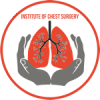Aspergilloma is a unique and intriguing lung condition caused by the Aspergillus fungus, characterized by the formation of a fungal ball in pre-existing lung cavities. Unlike typical lung infections, which are often caused by bacteria or viruses, aspergilloma is distinct in its presentation, causative agent, and treatment approach. In this comprehensive guide, we will delve into what an aspergilloma is, its causes, symptoms, and the key differences that set it apart from other lung infections.
Understanding Aspergilloma
An aspergilloma, also known as a fungal ball, is a mass or clump of fungus that grows in the lung’s cavities or pre-existing lung cavities, often caused by the Aspergillus species. Aspergillus is a common type of mold found in the environment, and its spores can be inhaled into the lungs.
Causes
The primary cause of aspergilloma is the inhalation of Aspergillus spores, which can affect individuals with pre-existing lung cavities or lung conditions such as tuberculosis, bronchiectasis, or sarcoidosis. The fungus tends to thrive in areas where there is decreased lung function or poor lung drainage, creating an environment conducive to fungal growth.
Symptoms of Aspergilloma
The symptoms of aspergilloma can vary from mild to severe and may include:
- Hemoptysis: Coughing up blood is one of the most common symptoms of aspergilloma. The fungus can irritate the lung tissue, leading to bleeding.
- Chest Pain: Patients may experience chest pain or discomfort due to the presence of the fungal mass and the pressure it exerts on surrounding lung tissues.
- Cough: Persistent coughing may occur, often with mucus production, as the body tries to expel the foreign matter.
- Fatigue: Aspergilloma can cause general weakness and fatigue, impacting the patient’s overall energy levels.
- Weight Loss: In severe cases, patients may experience unexplained weight loss due to the ongoing infection and inflammation in the lungs.
Diagnosing Aspergilloma
Diagnosing aspergilloma involves a combination of medical history evaluation, physical examination, and diagnostic tests. Imaging studies such as chest X-rays or computed tomography (CT) scans are crucial for detecting the characteristic fungal ball in the lung cavity. Additionally, sputum cultures and serologic tests can help identify the Aspergillus fungus and confirm the diagnosis.
Differences between Aspergilloma and Other Lung Infections
Aspergilloma stands out from other lung infections in several ways:
- Causative Agent: Aspergilloma is caused specifically by the Aspergillus species, while other lung infections can be attributed to various bacteria, viruses, or fungi.
- Presentation: Aspergilloma typically forms a rounded, ball-like structure within pre-existing lung cavities, whereas other lung infections may lead to diffuse infiltrates or nodules throughout the lung tissue.
- Risk Factors: Aspergilloma is often associated with underlying lung conditions or cavities, while other lung infections can affect individuals with compromised immune systems, chronic respiratory conditions, or exposure to specific pathogens.
- Treatment Approach: Treating aspergilloma involves managing symptoms, controlling bleeding, and possibly antifungal therapy. However, complete eradication of the fungal mass is challenging, and surgical removal may be necessary in severe cases. In contrast, other lung infections may be treated with antibiotics, antiviral medications, or specific antifungal drugs, depending on the causative agent.
Management and Treatment of Aspergilloma
Aspergilloma management focuses on alleviating symptoms, preventing complications, and reducing the risk of bleeding. In mild cases, close monitoring may be sufficient, while in severe or recurrent cases, interventions such as embolization (blocking the blood supply to the aspergilloma) or surgical removal may be considered. Antifungal medications are generally not effective in treating aspergilloma, as the fungus forms a dense structure that is difficult for drugs to penetrate.
Prevention
Preventing aspergilloma involves reducing exposure to Aspergillus spores. Individuals with underlying lung conditions should work closely with their healthcare providers to manage their condition and maintain optimal lung health. Avoiding environments with high mold concentrations, such as decaying vegetation or construction sites, can also help reduce the risk of exposure to Aspergillus spores.
Conclusion
Aspergilloma is a unique lung condition caused by the Aspergillus fungus, characterized by the formation of a fungal ball in pre-existing lung cavities. Its distinct characteristics and treatment approach differentiate it from other lung infections caused by bacteria or viruses. Early diagnosis and appropriate management are essential to alleviate symptoms and prevent complications associated with aspergilloma. If you suspect any lung-related symptoms, seek prompt medical attention to receive a timely and accurate diagnosis.






